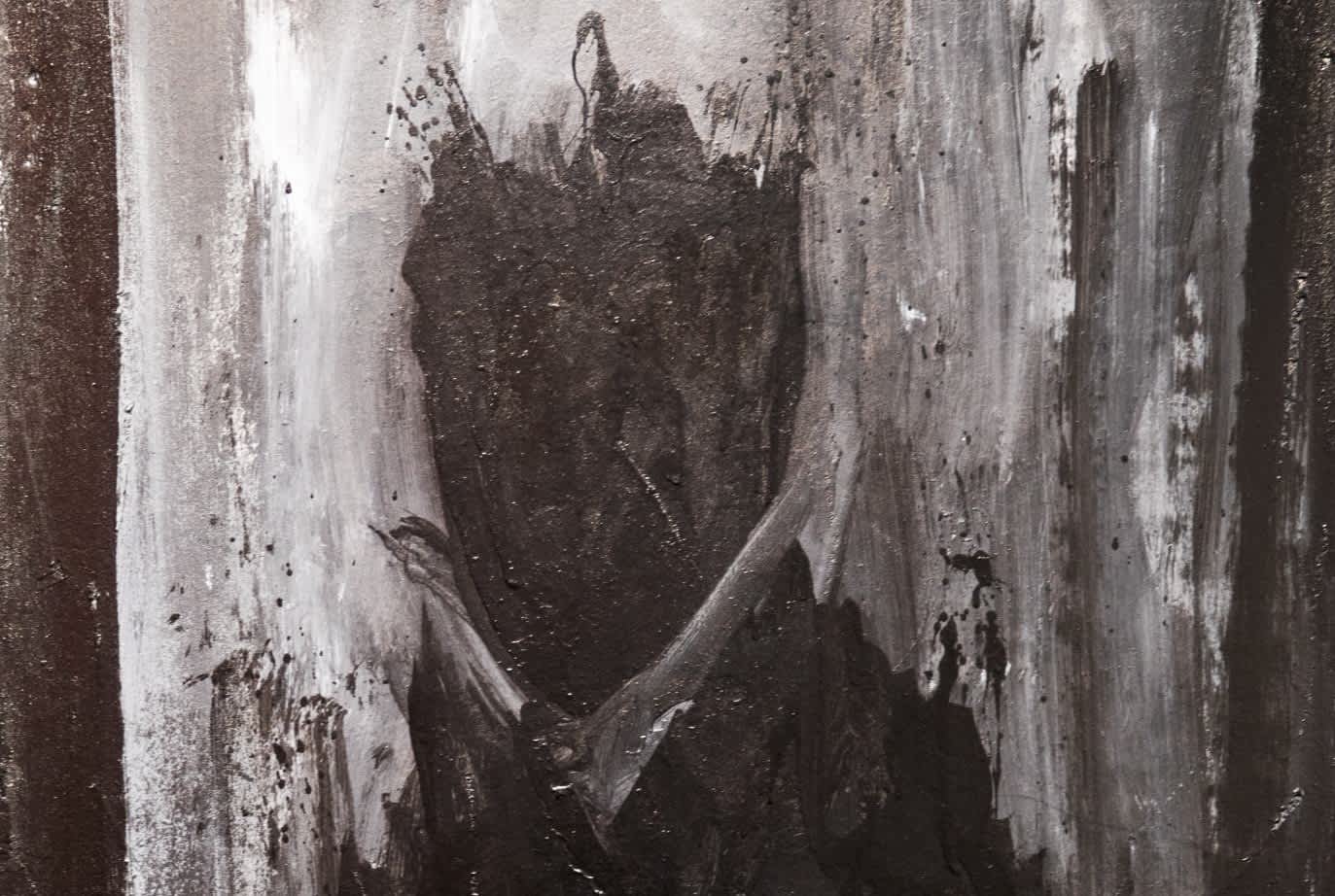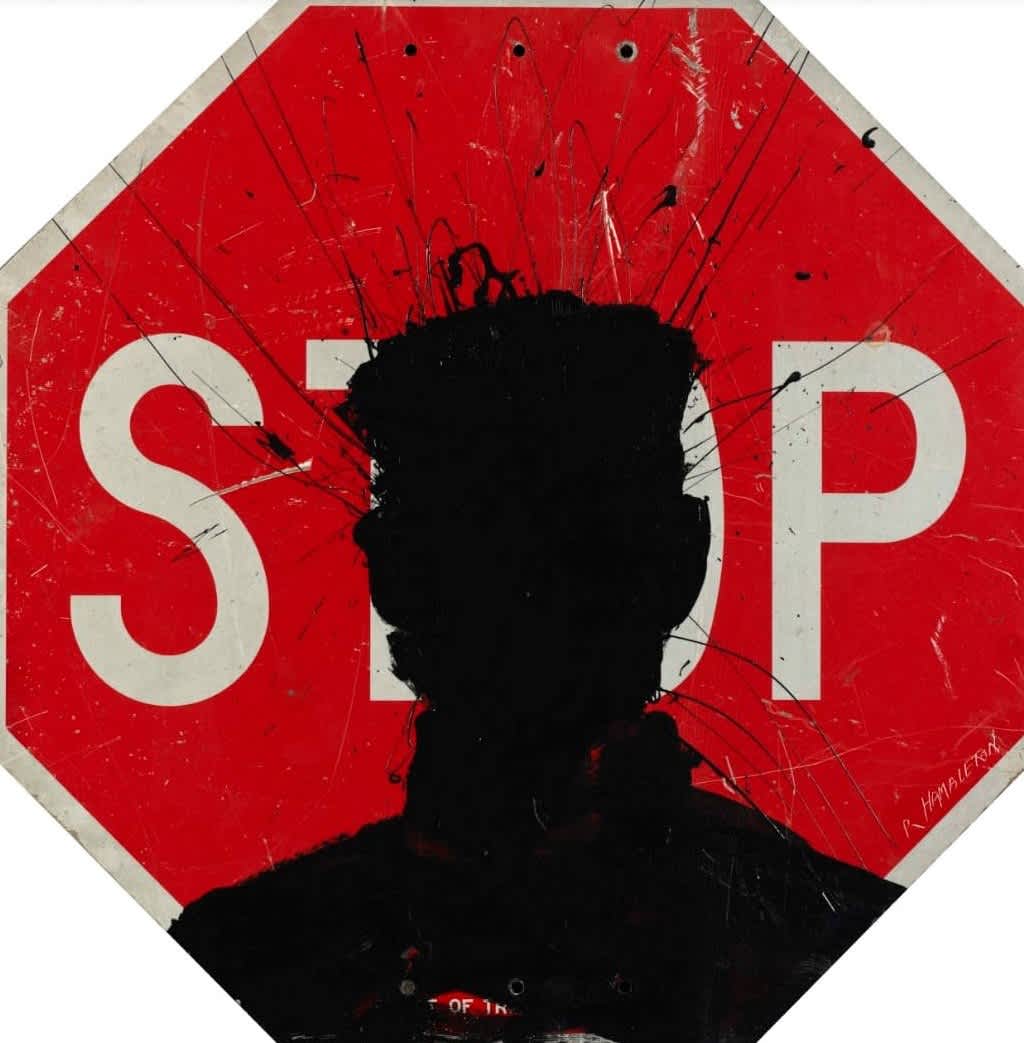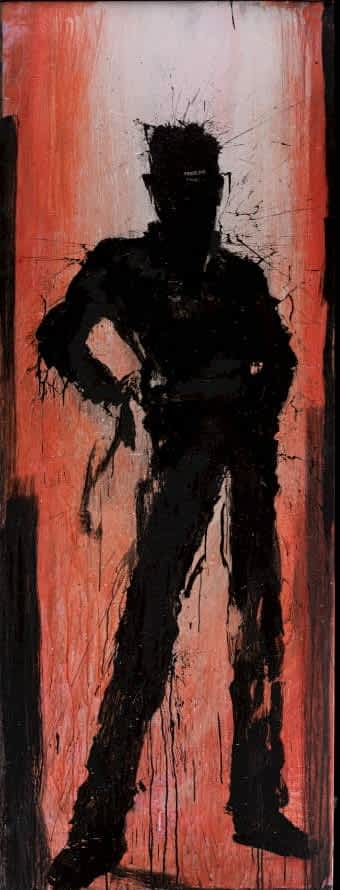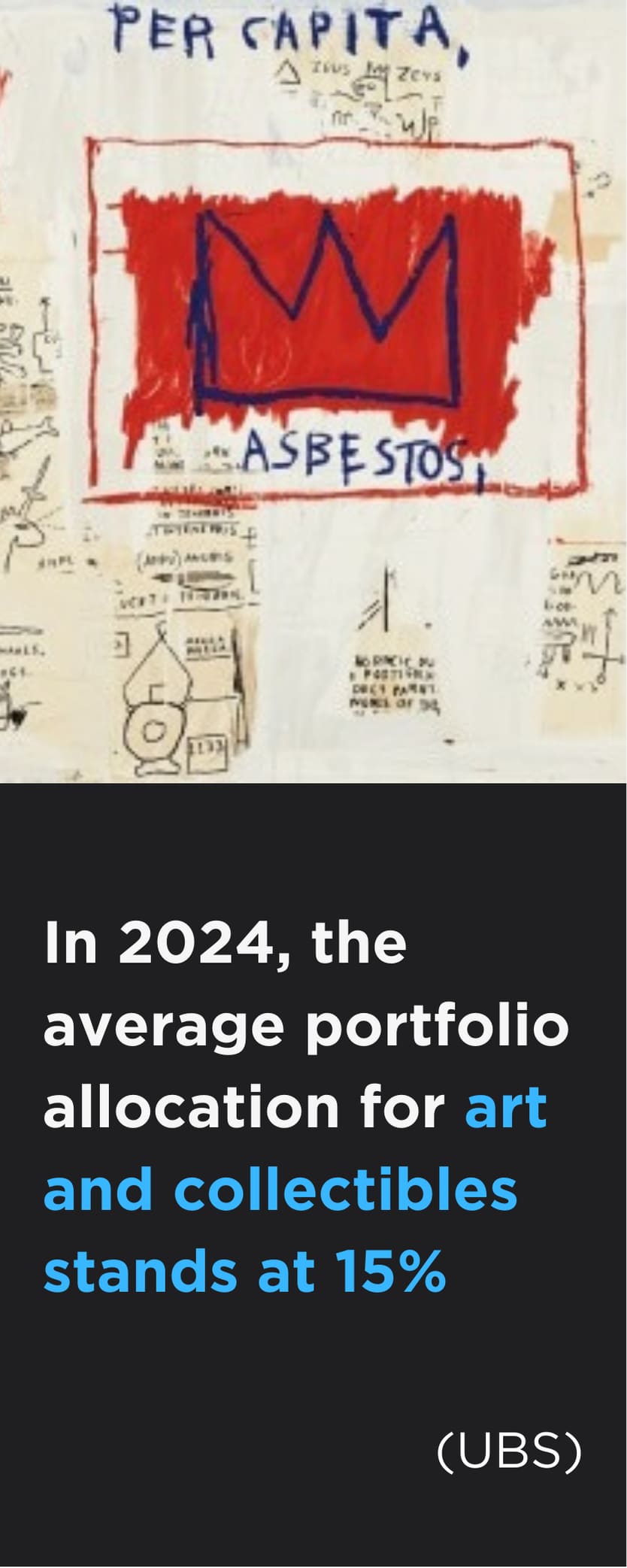5 Reasons Why Richard Hambleton Is An Artist To Collect
Hambleton was a Canadian-American street artist who is widely credited as the original godfather of street art and kingpin of the creative revolution that exploded in the East Side in the 1980s.
Like Keith Haring and Jean-Michel Basquiat, the streets of New York were his original canvas, and at the height of his prominence in the mid-1980s he was more highly-valued and sought-after than any of his contemporaries, inspiring a new generation of artists including Blek Le Rat and Banksy.
Significance
Considered by many to be the Godfather of street art - a title the artist rejected - Hambleton first appeared on the scene in 1976 with his Mass Murder series. For these works, of which he created 600 across 15 cities, the American-Canadian would anonymously chalk the outline of volunteer's bodies on US sidewalks, creating a vivid impression of homicide scenes. But it was the menacing, life-sized, black-silhouetted figure of his early eighties character, the Shadowman, that propelled him to fame - he painted some 450 of them on the walls of New York City.
His reputation established, the artist started to paint the character on canvas. Important New York galleries like the Museum of Modern Art - which held Hambleton exhibitions in both 1984 and 1985 - quickly em-braced him. As did Europe, and he toured the continent in the early eighties, painting his shad-owmen on the walls of London, Paris, Berlin and Rome, as well as across Venice for the Biennale in 1984 and 1988. But money and fame didn't satisfy Hambleton, and by the nineties, with an aggressive and ever-worsening drug habit, he had fallen out of view.
Renaissance
In 2009, the art dealer, Andy Valmorbida, along with his business partner, Vladmir Restoin-Roitfeld, tracked down the reclusive artist, and the pair both encouraged and funded him to em-bark on a new series of work, resulting in pieces such as Jumping Shadows in Black & White and Horse and Rider. This led to Hambelton's re-emergence, with Richard Hambleton New York opening during fashion week in New York, sponsored by Armani (a passionate collector) and attended by a host of A-list celebrities.
Shadowman, 1996, Acrylic on Canvas, 198 x 79 cm
The exhibition then travelled to Milan, Moscow, Cannes and Paris, before returning to New York in 2011. By now Hambleton's name was once more being held in the same high esteem it had garnered in the 1980s, when he was more famous than his contemporaries Jean-Michel Basquiat and Keith Haring, and had twice appeared on the cover of Life magazine.
Hot Property
When Hambleton died in 2017, stricken by cancer, fighting scoliosis and kyphosis, and with his health irreversibly weakened from years of addiction and poverty, the market for his work saw an immediate surge. Within months his 1984 piece, Fountain of Youth II, sold at Sotheby's for $150,000, an impressive leap in value for an artist who had until recently been mainly selling in the thousands. But private sellers reported that they were selling Hambletons for even more than that, citing figures between $500,000 and $1 million. So it was no surprise that in 2018 his 1983 painting, As The World Burns, was auctioned off for some $552,000 at ARTCURIAL in Paris. As Ghada Dergham, one of Hambleton's biggest collectors, said: 'Given Richard's reputation, I think the sad truth is that a lot of people were waiting for him to pass away because that's when whatever they owned would be worth so much more.'
Legacy
How many works Hambleton created during his lifetime is unknown. Although galleries could sell his works for thousands of dollars, Hambleton would regularly sell them from his studio for considerably less. He disappeared from the art world in 1985, turning down both gallery representation and exhibitions, selling his art solely to cover his rent and drug addiction.
Standing Shadow with Orange and Pink, 2009
As art collector Robert Murphy says, somewhat sadly, of Hambleton during the nineties: 'He was a side note at that time, selling his art for nothing to anyone who would buy it.' Sales aside, he was also known from time to time to exchange paintings for a fancy dinner or indeed for drugs. And in his prime Hambleton used to trade paintings with other artists in his milieu - according to their self-applied system, one Hambleton was worth four works by Basquiat. (A Basquiat, it should be noted, sold privately to hedge fund manager Ken Griffin for $100 million this June.)
Huge Influence
A pioneer of street art - though he saw his work as art in public places - Hambleton can be thanked in part for the explosion of graffiti art and the continuing emergence of new contemporary artists, many of whom he inspired. As Paper Magazine wrote in 2009,
'Memo to Banksy: You owe Richard Hambleton a small fortune in royalties.'
Banksy would readily agree to that sentiment, having cited Hambleton as one of his influences. So too has Blek Le Rat, who said, 'This Ameri-can artist from NYC was the first street artist to export his work all over the world. It was really incredible to do that in the beginning of the 80′s! Richard Hambleton's shadowmen that I discovered in Paris were a great inspiration to me… He's the only artist I ever bought a painting off, one of the greatest.'
















